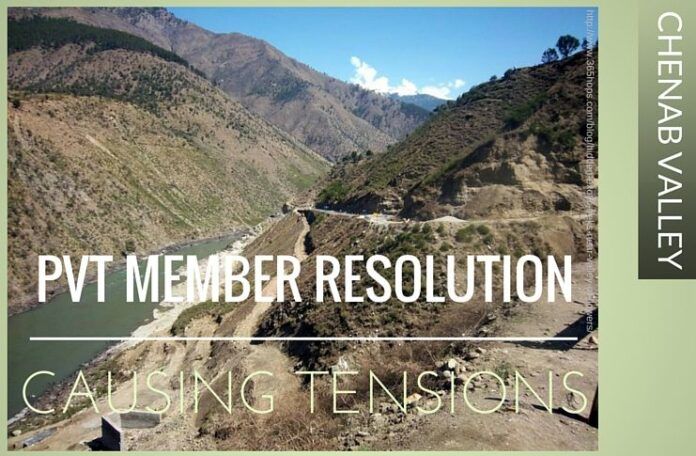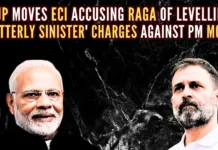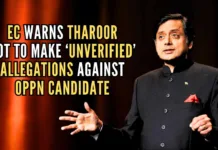
[dropcap color=”#008040″ boxed=”yes” boxed_radius=”8px” class=”” id=””]T[/dropcap]ensions are rising in Jammu province following the Jammu & Kashmir Speaker’s decision to accept a Private Member Resolution by Congress MLA G.M. Saroori for a separate Chenab Valley Hill Development Council, on the lines of the Leh & Kargil Hill Development Council.
On May 31, the Speaker also accepted for discussion Saroori’s resolutions for immediate survey for laying of railway line from Gool-Kishtwar and Jammu to Poonch via Rajouri, and a separate special financial component for erstwhile Doda district to bring it at par with other districts of the State.
Saroori justified a separate Hill Development Council for the Chenab Valley on grounds that Chief Minister Mehbooba Mufti had supported it while in opposition; he expressed confidence that the ruling People’s Democratic Party and the main opposition party, the National Conference, would support his resolutions.
The move has inflamed large sections of the majority community in Jammu province, who argue that there has never been any geographical entity called Chenab Valley in the State and that the intent of the resolution is to separate erstwhile Doda district from Jammu province, thereby creating a Hindu Jammu and Muslim Jammu, a plan originally envisaged by Australian jurist, Sir Owen Dixon, in his proposal to the United Nations way back in September 1950.
Dixon, who arrived in India in May 1950 as special representative of the UN, suggested to the Security Council that since Jammu is mainly Hindu, Kashmir Valley predominantly Muslim, and Ladakh Buddhist, a plebiscite embracing all communities would cause Partition-style refugee problems.
[dropcap color=”#008040″ boxed=”yes” boxed_radius=”8px” class=”” id=””]H[/dropcap]e mooted a “plebiscite by areas” only in regions where the will of the people was unclear, that is, where the communal balance was uncertain. Dixon assigned Ladakh to India, the Northern Areas and Pakistan-Occupied Kashmir (POK) to Pakistan, split Jammu between the two, and envisaged a plebiscite only in the Kashmir Valley. Thus, Dixon proposed that Pakistan keep the territory it had grabbed and tried to extract more strategic Indian territory to it.
Dixon wanted to join the predominantly Muslim Doda, Rajouri and Poonch districts to Kashmir valley (and go via plebiscite to Pakistan). Hindu-dominated Kathua and Jammu would stay with India.
Since then, this so-called Chenab solution has repeatedly surfaced as a ploy to take the Muslim-majority areas of Jammu out of the province. Dixon wanted the north of Chenab to be declared as the ‘new’ international border. As Nehru could hardly take such a deal to the cabinet and survive politically, it died a natural death.
Around the time of the Agra Summit in 2001, Gen. Musharraf proposed seven councils – a variant of Dixon. Musharraf suggested two regional councils in Jammu (along Hindu-Muslim demographic lines), two in Ladakh (along Buddhist-Muslim demography) and one for Kashmir (to maintain its Muslim character). Later, then Prime Minister Manmohan Singh’s special expert Wajahat Habibullah mooted the same division of the state at the Working Group on Centre State Relations at its last meeting on 2 September 2007. Officially, Habibullah was invited to speak on panchayati raj!
[dropcap color=”#008040″ boxed=”yes” boxed_radius=”8px” class=”” id=””]T[/dropcap]he attempt to create an administrative model for Jammu province that will coincide that the demographic divide and deepen religious cleavages has since been the endeavour of all regimes in the State. The Congress member’s resolution has been virulently opposed by the new public opinions forum, Jammu For India, which argues that this “break-Jammu resolution”, if accepted by the Assembly, would only help the protagonists of Greater Kashmir to achieve their cherished 68-year-old goal and help Pakistan to establish complete control over the precious Chenab waters.
JFI convener, Prof Hari Om, former head of the department of History, University of Jammu, Jammu, who was expelled from the Bharatiya Janata Party for opposing the unequal coalition with the People’s Democratic Party, argues that Pakistan has never been interested in the people of Jammu & Kashmir, but keeps the pot boiling in the State in order to gain total control of the precious waters of the Indus; “the very survival and existence of Pakistan depends on the Chenab waters.”
The pro-Pakistan elements in J&K have long attempted to dub the erstwhile Doda district as “Chenab Valley” in order to serve Islamabad’s interests. Jammu For India warns that acceptance of the Congress members’ resolution that seeks to separate erstwhile Doda district from Jammu province and the setting up of an autonomous hill council development in this area would facilitate the establishment of Greater Kashmir and dismemberment of Jammu province. JFI has called upon all Jammu-based legislators to ensure the defeat of the Congress resolution which seeks to destroy the distinct identity and personality of Jammu province.
- Plagiarism with Pride - November 10, 2018
- “Hindu-ness is the essence of India” – RSS Sarsanghachalak - September 20, 2018
- Lacunas persist in Kathua story - May 5, 2018











sinister plan of Pakistan lobby prevailing in India ,
Is it a hidden fact that funds are being allocated based on the concept of CHENAB VALLEY by govt of India. Power projects,are based on chenab valley and development plans are drawn based on it.
Though Sir dixons plan was thwarted naturally then but it has come back with vengeance. Let us see how can the present central gov’t thwart it.